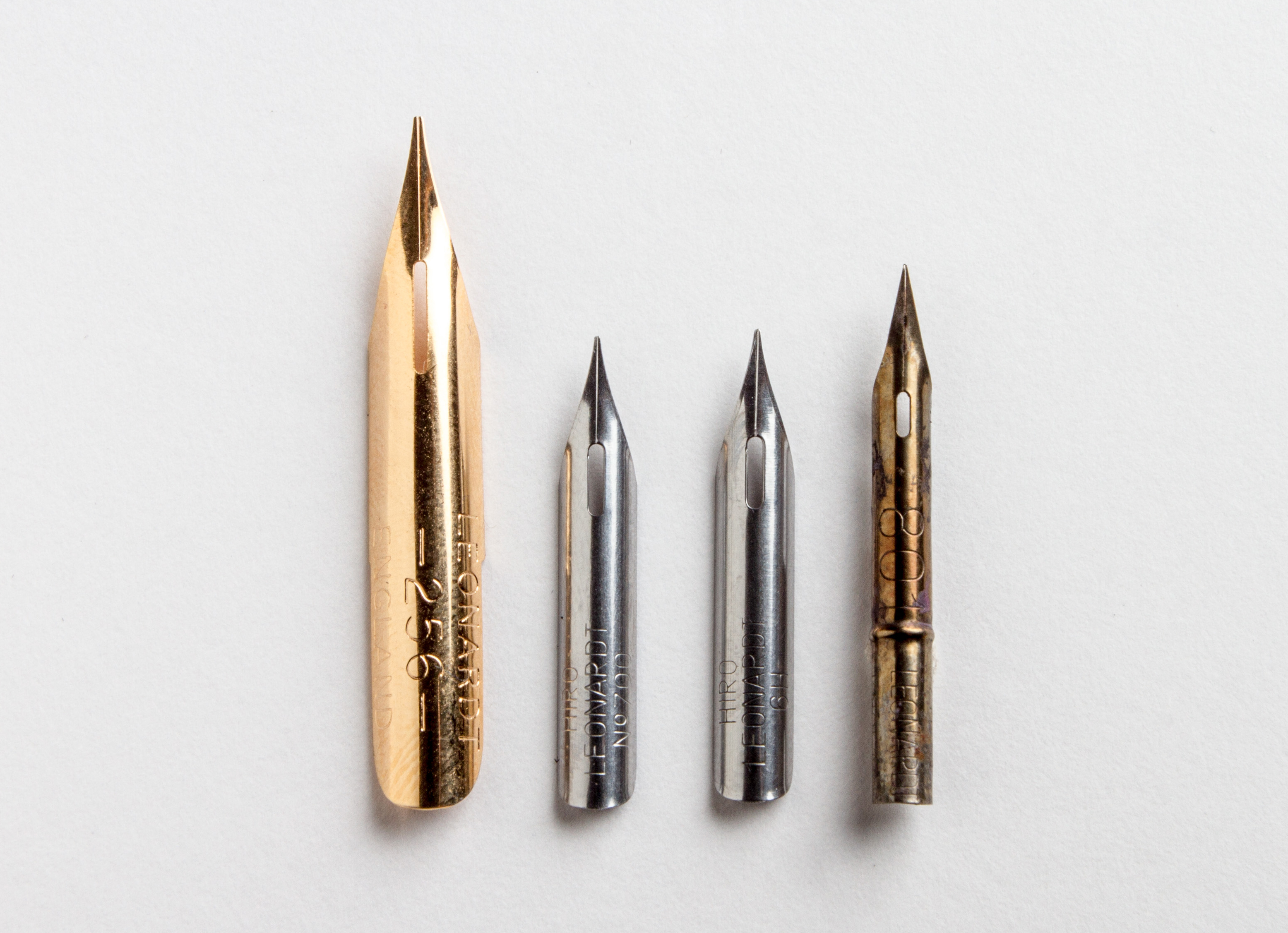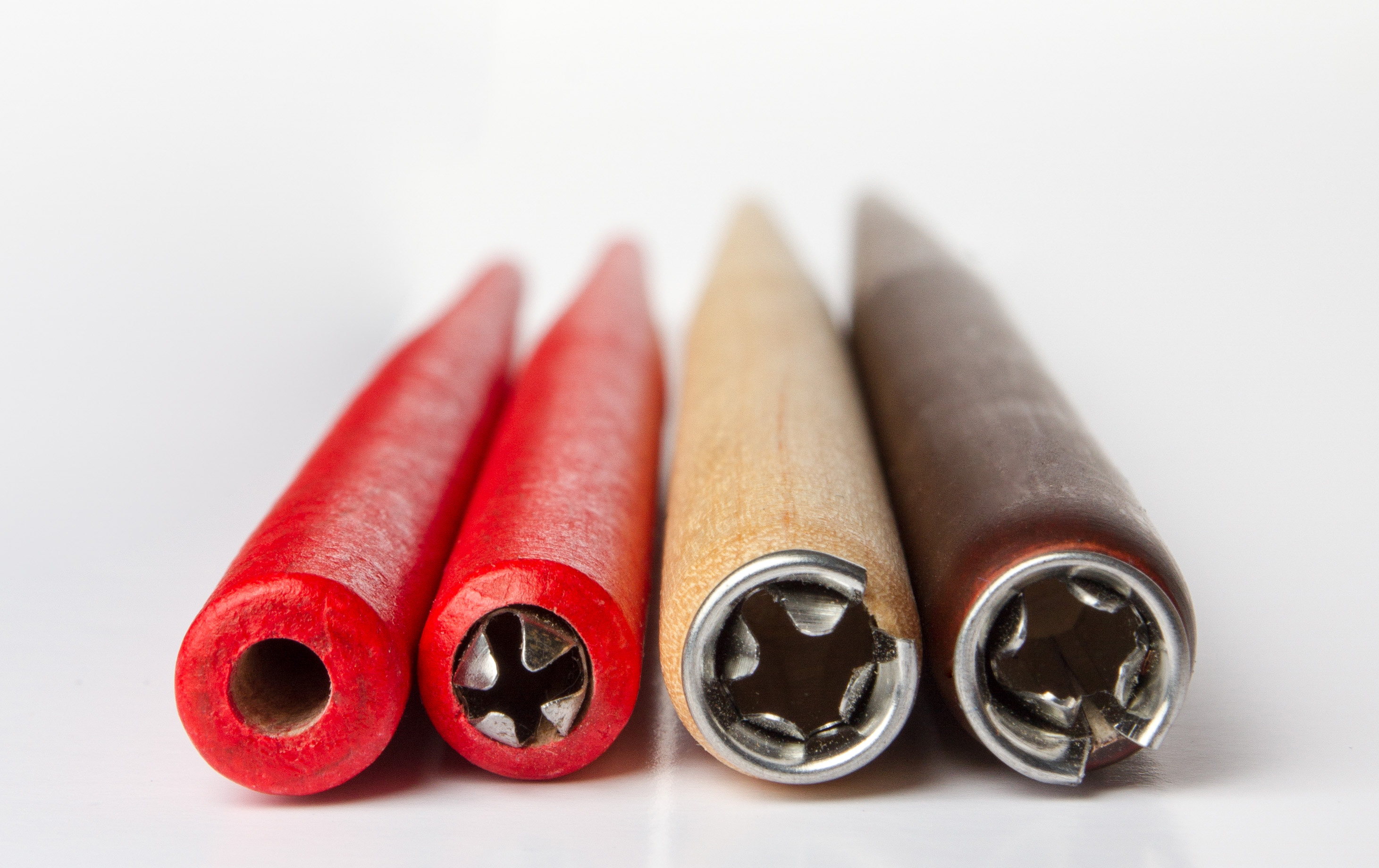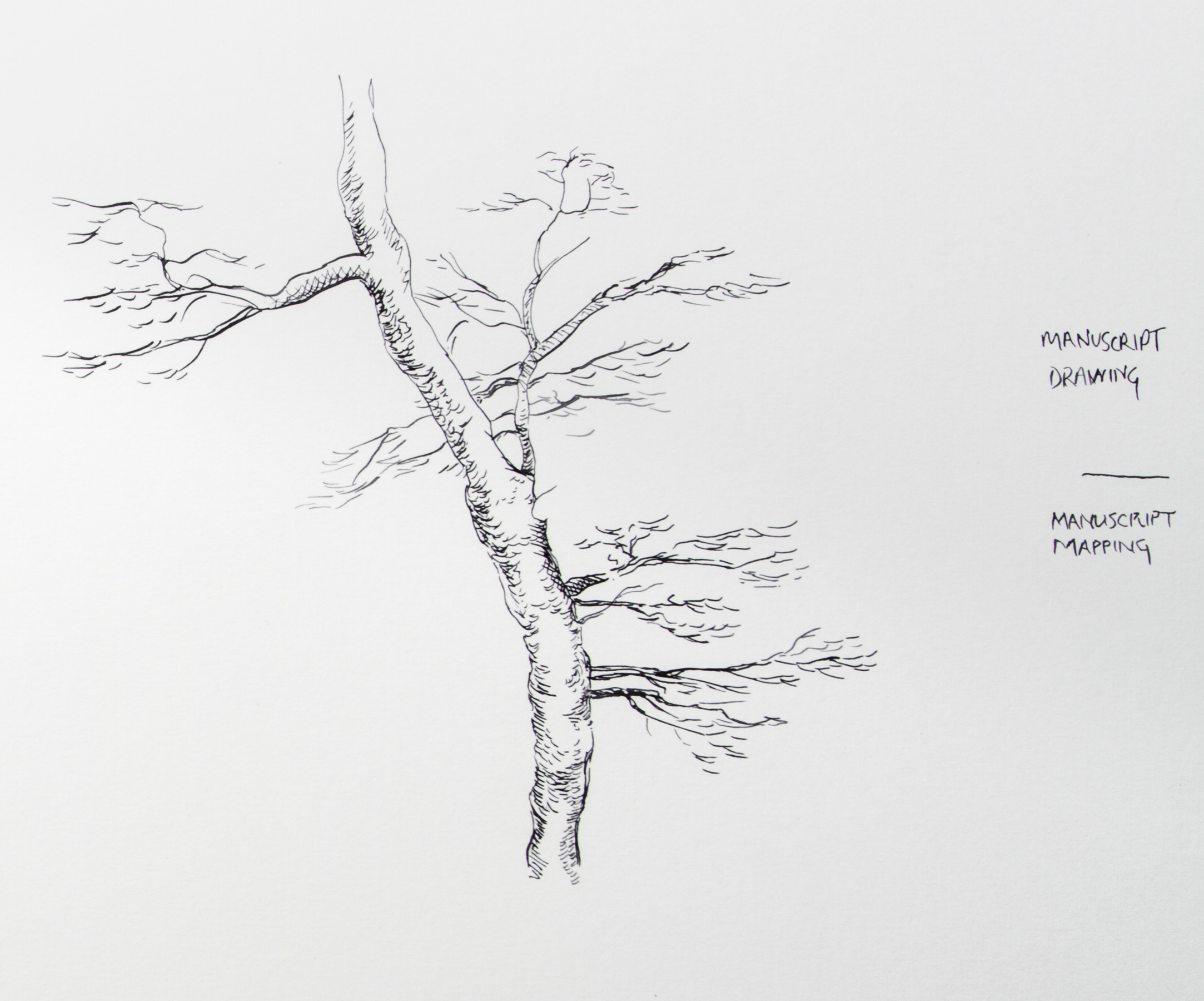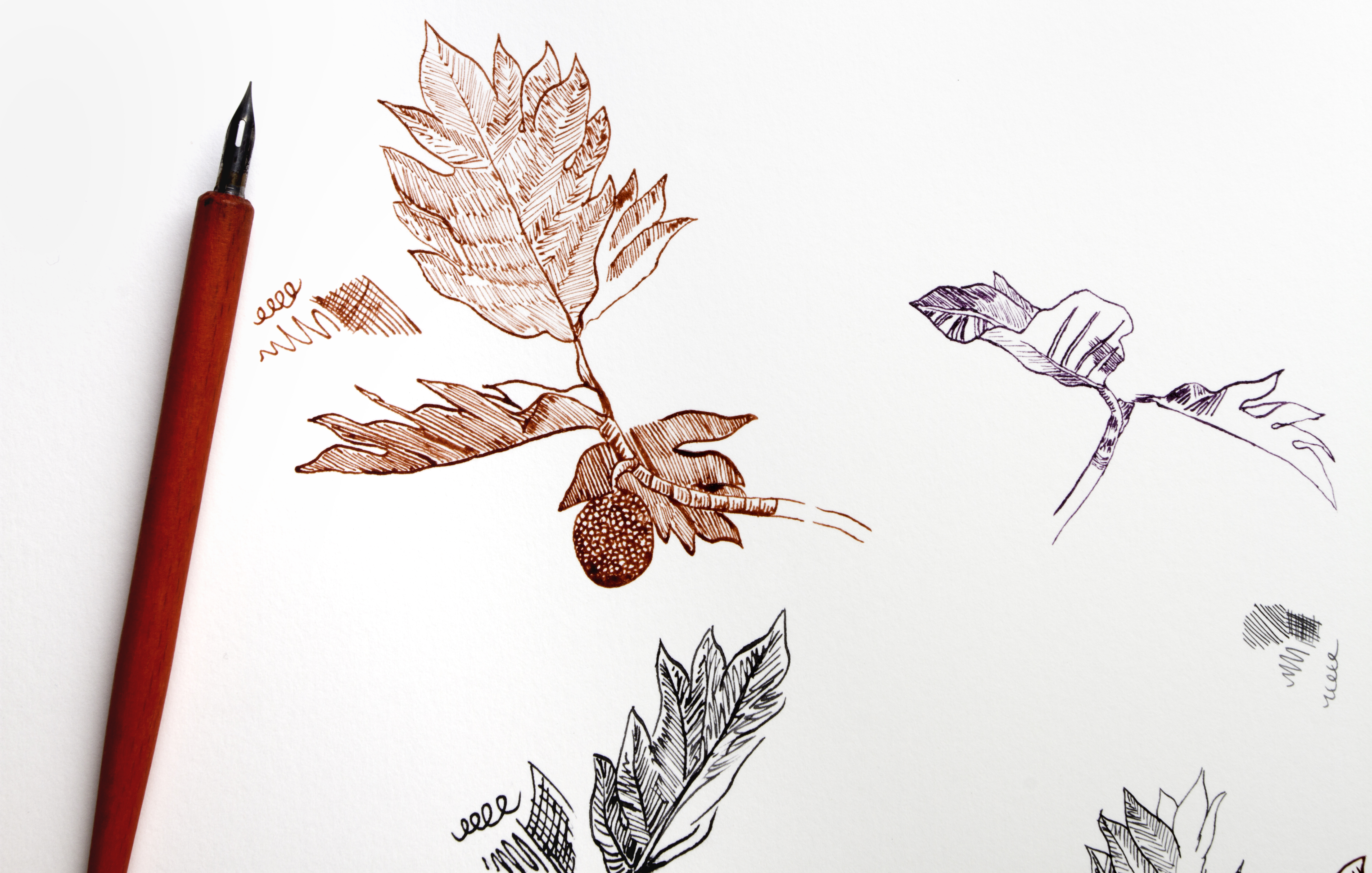use chinese caligraphy pen to draw tree trunks
Dip pens are great for spontaneous sketches or for studying the work of the great draughtspeople of the past. This article aims to explain the process of drawing with dip pens and drawing inks, and to provide some buying advice for those who are new to the medium
Drawing with Dip Pens
In 'The Book of the Courtier', Baldassare Castiglione's early sixteenth century manual for courtly gentlemen, sprezzatura is described as "a certain nonchalance, so as to conceal all art and make whatever one does or says appear to be without effort and almost without any thought about it". Many of the best drawings in pen and ink have this quality. They aren't careless, but they conceal a lot of the effort that went into them. Consider the trees in Rembrandt's sketch of a thatched cottage (pictured below). The trunk and the major boughs of each tree are made up of vertical strokes, while right-handed diagonal hatching indicates areas of foliage in shadow, and rapidly drawn cloud/sheep shapes delineate sunlit bunches of leaves. Out of these three simple types of stroke, which even a child can master, the artist has created a believable stand of trees.

Rembrandt van Rijn, 'Cottage Among Trees' (Pen and brown ink, brush and brown wash, on paper washed with brown, c.1650).
Copying works like this, you soon realise how useful a lifetime of quill or dip pen use in everyday life would be. Modern fountain pens do not have the same characteristics, and don't really prepare you for the experience of drawing with a dip pen. Most dip pens will only draw downwards strokes, and they will invariably run dry halfway through a long, smooth stroke. Rembrandt will have used a pen with these limitations every day.
Nevertheless, it's worthwhile sticking at it. Modern dip pens are capable of producing a variety of textures, from long, sinuous lines to scratchy, hasty-looking scribbles. Unlike many of the quills or pens of the past, some can even make upward strokes as well as downward. Persist and you will find them a satisfying and affordable means of making sketches from life or memory.
Getting Started with Dip Pens
It won't necessarily cost you very much to get started. All you will need to get going will be:
- A couple of nibs
- A pen handle which can hold the nibs you have chosen
- Ink
- An appropriate paper
You should be able to acquire all of this for less than £20, and perhaps around £10 if you already own an suitable paper. I'll discuss nibs, handles and inks below, but first a note about the paper. Ideally, this will be a quality cartridge paper or Bristol board with a smooth or vellum finish. This is because dip pens, especially the smaller nibs, will scratch the surface of rough, textured or low-quality papers, tearing at the fibres. These sodden fibres can then lodge in the nib, either blocking the flow of ink or causing droplets to splatter over your drawing. These Strathmore 300 Series Smooth Bristol pads will all provide a really great surface for pen and ink work, as will the slightly higher quality 400 Series. All purpose cartridge paper is fine for sketching and testing your pen.
Dip Pen Nibs and Handles
Jackson's supply a range of nibs, which cover the whole spectrum of nib profiles, ranging from calligraphy nibs to drawing and mapping nibs. I'm going to focus on the drawing and mapping nibs here, as very few artists will want to be drawing with calligraphic nibs.

Manuscript Nibs, from left to right: Drawing Nib I; Drawing Nib J; Drawing Nib N; Mapping Nib K.
Jackson's carry three sizes of Manuscript drawing nibs, all of which are quite easy to draw with. Drawing Nib I fits in either the Natural Wood Pen Holder (GCHW) or the Nut Brown Pen Holder (GCHNB), and is the easiest of the three to use, because it holds a lot of ink and is a reasonably thick nib. This makes it suitable for very fast sketching. Unlike most of the finer dip pen nibs, it can be used for ascending strokes as well as descending.
Drawing Nibs J and N (GCNJ and GCNN respectively) offer slightly finer nibs – nib J is the finest – and must be used with a different handle (GCHO). Mapping nibs have a finer point still, and must be used with a mapping pen handle. This is because the tail, base or heel of the nib (that is, the end that slots into the pen handle) forms a perfect circle of about a 2mm diameter, which doesn't fit the ferrule of a drawing pen holder. You can see the different ends of each pen handle in the photo below.

Manuscript pen handles, left to right: Mapping Pen Holder; Drawing Nib Holder With Ferrule; Dip Pen Holder Natural Wood; Nut Brown Pen Holder.
I would recommend starting with Drawing Nib J or Mapping Nib K, both of which are great for detailed work. Remember on your first purchase that you will need a couple of nibs, since they do tend to rust and get scratchy with age and use. The real advantage of these Manuscript pen holders is that the replacement nibs will only cost you around 70p. I've prepared a table to link each handle to the nibs it can hold.
| Handle name and product code | Nibs which fit this handle |
|---|---|
| Manuscript Drawing Nib Holder With Ferrule (GCHO) | Drawing Nib J (GCNJ), Drawing Nib N (GCNN) |
| Manuscript Mapping Pen Holder With Drilled Hole (GCHZ) | Mapping Nib K (GCNK), Mapping Nib KA (GCNKA) |
| Manuscript Dip Pen Holder Natural Wood (GCHW), Manuscript Nut Brown Pen Holder (GCHNB) | Drawing Nib I (GCNI) |
The slightly simpler option is to go for one of the Joseph Gillott nib and handle sets made by William Mitchell Calligraphy, which come in Drawing and Mapping varieties. I find the Gillott nibs, of both Drawing (GWM35821) and Mapping (GWM35816) varieties, slightly harder to draw with than the Manuscript range, simply because the nibs themselves are more flexible. This means that they flex against the page very readily, and it can be quite difficult to control the width of the line. The great advantage of these sets is that you get a lot of different nibs to try and a handle which you can be sure will fit them. The drawing set includes 8 nibs, and the mapping set 6.

A study of Fra Bartolomeo's 'Tree In Winter' (pen and ink, first decade of the Sixteenth Century), drawn in Dr. Ph. Martin's Radiant Watercolour Dye in Black. The bottom half of the tree was drawn with Manuscript Mapping Nib K (GCNK) and the top half with Drawing Nib J (GCNJ), as indicated on the far right.
Trying Out Your Pen
Most dip pen nibs come coated in wax, to stop them tarnishing in storage. To draw with them, you will need to submerge them in boiling or just-boiled water for half a minute or so, which melts the wax and allows ink to flow freely from the nib onto the page. (Your nib should also be washed clean and dried completely after every use to stop it rusting.)
It's helpful to have a sheet of paper just for doodling when you first pick up the pen or change nibs. Practice hatching or laying down tints; large areas of uniformly spaced lines which describe the shape of an object. This will give you a sense of how the ink flows from the nib, what colour the ink is, and how the width of the line varies with pressure. Try cross-hatching, too, drawing quickly to make your strokes more decisive.
If you can, try to move from darker to lighter areas of your drawing after each dip; this way, the pen won't deposit a thick line of dark ink onto, say, a wisp of smoke or a cloud. In Rembrandt's drawing of a cottage, he uses a heavily inked pen for the cottage itself, which is both the focal point of the drawing and the most heavily shaded object in view; the shading on the grass either side of the path is much more lightly inked.

Study of Fra Bartolomeo's 'Tree In Winter', drawn with Mapping Nib K up to the point indicated on the right hand side of the picture. Above the line, Manuscript Drawing Nib J was used. The mapping nib was slightly better suited to the bare, scratchy style of the original drawing.
Drawing Inks
Sennelier probably do the best range of light-resistant drawing inks. Their wide range of coloured inks all come in a sensible bottle with a low centre of gravity so that you can't knock them over, and a pipette lid (though they also have an Indian ink, without a pipette). These are traditional inks, made with shellac, so they dry to a water-resistant finish (though do be aware that they aren't vegan). For the sketches of breadfruit trees below, I used Sanguine and the rather purple Neutral Tint, while the black is Dr. Ph. Martin's Radiant Radiant Watercolour Dye, a rich but non-lightfast black ink with a handy pipette lid.

Sketches of breadfruit tree leaves. Above left, a spray drawn in Sennelier Sanguine Drawing Ink with Manuscript Drawing Nib J (GCNJ), shown in the Manuscript Drawing Pen Holder With Ferrule (GCHO). Above right, a spray drawn in Sennelier Neutral Tint, with a nib and handle from the Joseph Gillott Mapping Pen Set (GWM35816). Below, sprays and doodles drawn in Dr. Ph. Martin's Radiant Watercolour Dye Black.
Winsor & Newton Drawing Inks come in squat little bottles which are quite hard to knock over. They aren't expensive, and they come in a range of beautiful colours, though they do have one major drawback; the only lightfast inks in the range are the Black and Liquid Indian Inks, and the White. All of the colour inks are made with fugitive dyes. If this isn't a problem for you, then you have a whole range of colours to choose from. I would particularly recommend the Nut Brown; you can get a really nice Old Master-ish walnutty brown by mixing it with a little Black Indian Ink, which will also strengthen the brown a little against the ravages of time.
Source: https://www.jacksonsart.com/blog/2016/10/14/dip-pens-and-drawing-ink-guide/
0 Response to "use chinese caligraphy pen to draw tree trunks"
Post a Comment